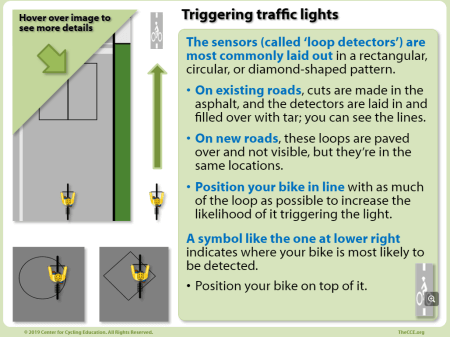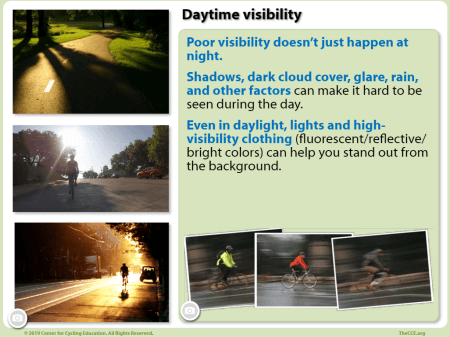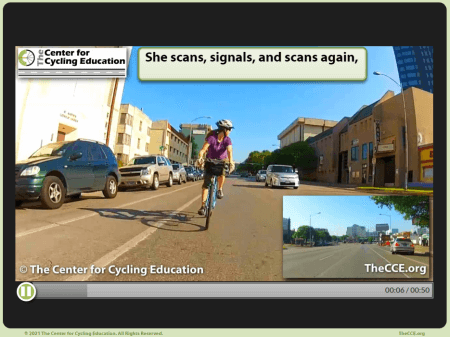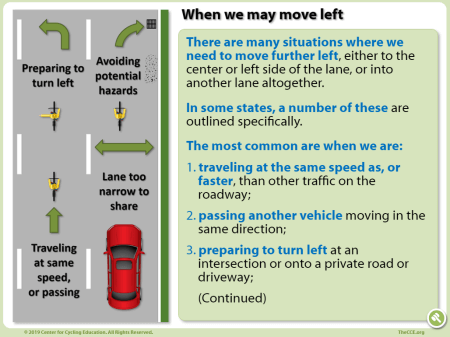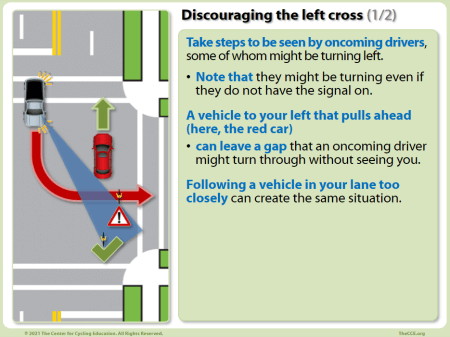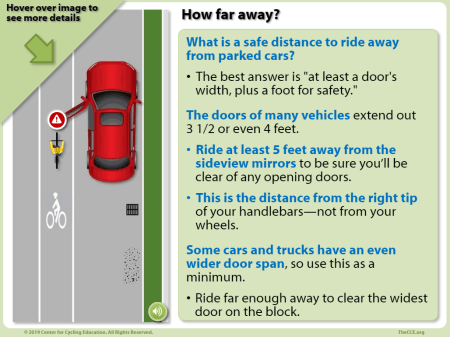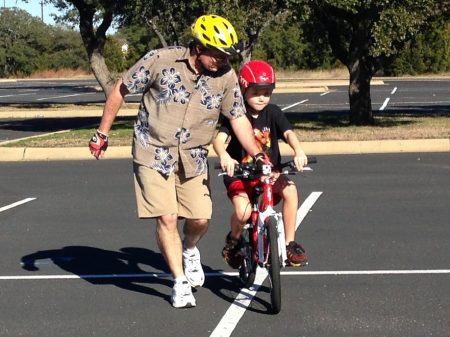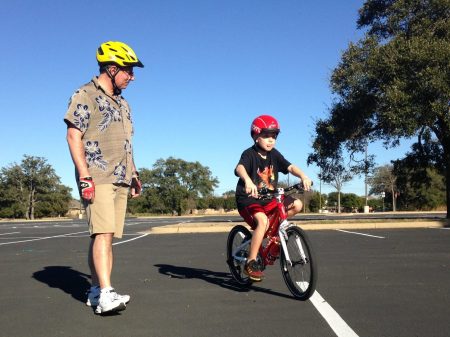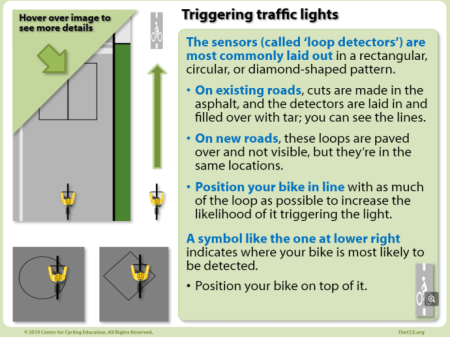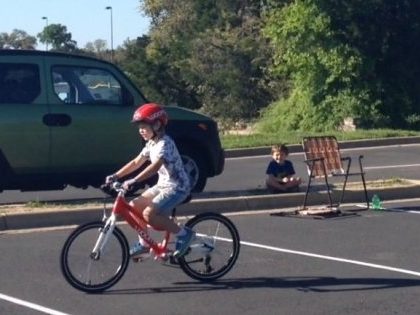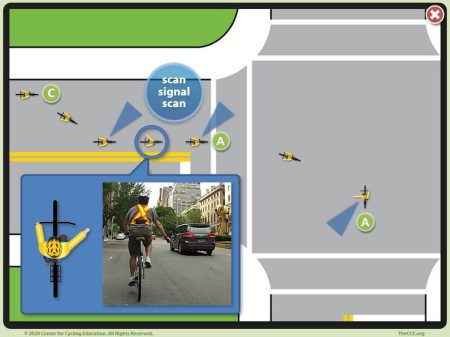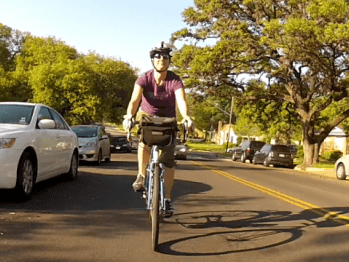Cycling regulations in Houston, TX
There are no federal laws outlining the rules of the road. Instead, each state has its own set of traffic laws. In many cases, these are based at least in part on the Uniform Vehicle Code.
In addition to this, counties, cities, and towns may have their own traffic regulations, usually known as ordinances or codes.
There are often regulations in other jurisdictions, including college campuses and military bases.
These local regulations may not take away any rights listed in the state traffic laws unless this option is expressly permitted by the state. They also may not permit a person riding a bike to do anything prohibited by state law.
See below for the municipal ordinances that apply to riding your bike in Houston.
USA » TX – Texas » Houston » Houston Code of Ordinances
Bicycles
Houston Code of Ordinances | Chapter 45 – Traffic
(Links directly below are to sections on this page. Others within the ordinance are to the specific section on the municode website.)
Article 1. – In General
- Sec. 45-13. – Pedestrians, bicycles, etc., upon limited or controlled-access highways
- Sec. 45-44. – Vulnerable road users
Article XII. – Bicycles
Divison 1. – Generally
Division 3. – Bicycle Helmets
- Sec. 45-325. – Definitions
- Sec. 45-326. – Helmet required
- Sec. 45-327. – Sale or lease of bicycles by dealers
- Sec. 45-328. – Penalty
- Sec. 45-329. – Bicycle helmet fund
(Retrieved from the municode website on September 20, 2019. This is not an official version.)
Houston Code of Ordinances | Chapter 45 – TRAFFIC 
ARTICLE 1. – IN GENERAL
Sec. 45-13. – Pedestrians, bicycles, etc., upon limited or controlled-access highways. ![]()
(a) No pedestrian shall go upon, walk along, or cross over any limited-access or controlled-access highway within the corporate limits of the city, except upon the portions along the outer margins thereof, which are designed for and known as “service roadways.”
(b) No person shall ride any bicycle or take any bicycle upon any limited-access or controlled-access highway within the corporate limits of the city, except upon the portions along the outer margins thereof, which are designed for and known as “service roadways.”
(c) No person shall drive or operate any wheeled vehicle which is not motor-propelled upon any limited-access or controlled-access highway within the corporate limits of the city, except upon the portions along the outer margins thereof which are designed for and known as “service roadways.”
(d) To avoid any doubt, if any doubt might otherwise exist, it is the purpose of the city council by this section to prohibit, within the center or middle portions of limited-access or controlled-access highways which are designed to accommodate through traffic, and to and from which connecting roadways lead to and from the service roadways, any use except for the operation thereupon of motor vehicles.
(e) Any person violating any of the terms of this section shall be guilty of an offense and shall be fined not less than $25.00 and not more than $200.00.
Sec. 45-44. – Vulnerable road users. ![]()
(a) Definitions. The following words, terms and phrases, when used in this section will have the meanings set forth in this subsection, except when the context clearly indicates a different meaning:
Safe distance means:
(1) While passing, a separation between a motor vehicle and a vulnerable road user that, when all road, traffic and weather conditions are considered, provides the motorist sufficient space and time to avoid a collision with a vulnerable road user but, in any event, not less than 3 feet if the operator’s vehicle is a passenger car or light truck and not less than 6 feet if the operator’s vehicle is a truck (other than a light truck) or a commercial vehicle as defined by Texas Transportation Code Section 522.003; or
(2) While trailing, a separation between a motor vehicle and a vulnerable road user that, when all road, traffic and weather conditions are considered, provides the motorist sufficient space and time to avoid a collision with a vulnerable road user.
Vulnerable road user means:
(1) A pedestrian (including a runner), physically disabled person (including a person in a wheelchair), stranded motorist or passenger, highway construction or maintenance worker, tow truck operator, or utility worker in the roadway;
(2) A person on horseback or operating a horse-driven conveyance, in the roadway;
(3) A person operating a bicycle (including an electric bicycle), hand cycle, or other human-powered wheeled vehicle in the roadway; or
(4) A person operating a moped, motor-driven cycle, or motor-assisted scooter, as those terms are defined in sections 541.201 and 551.351 of the Texas Transportation Code, as applicable.
(b) Action required. An operator of a motor vehicle or motorcycle shall:
(1) When passing a vulnerable road user on a highway or street;
a. Vacate the lane in which the vulnerable road user is located if the highway or street has two or more marked lanes running in the same direction if such action can be taken safely; or
b. Pass the vulnerable road user at a safe distance; or
(2) When making a turn at an intersection (including an intersection with an alley or private road or driveway), yield the right-of-way to a vulnerable road user who is approaching from the opposite direction and is in the intersection, or is in such proximity to the intersection as to be an immediate hazard.
(c) Prohibited action. An occupant of a motor vehicle may not:
(1) Knowingly throw or project any object or substance at or against a vulnerable road user, or the user’s animal, equipment, vehicle or conveyance;
(2) Overtake a vulnerable road user traveling in the same direction and subsequently make a turn in front of the vulnerable road user unless the operator is safely clear of the vulnerable road user, taking into account the speed at which the vulnerable road user is traveling and the braking requirements of the motor vehicle making the right-hand turn; or
(3) Maneuver the vehicle in a manner that is intended to cause intimidation or harassment to a vulnerable road user or threatens a vulnerable road user.
(d) Affirmative defense. It is an affirmative defense to prosecution under this section that, at the time of the offense, the vulnerable road user was acting in violation of any applicable traffic law.
(e) Offenses. The penalty for any violation of this section shall be a fine not to exceed $500.00.
(Ord. No. 2013-429, § 2, 5-8-2013)
ARTICLE XII. – BICYCLES ![]() [8]
Footnotes:
[8]
Footnotes:
— (8) —
Cross reference— Riding bicycles in restricted airport areas, § 9-66.
Sec. 45-301. – Authority to prohibit riding on roadways. ![]()
The traffic engineer is authorized to erect signs on any roadway prohibiting the riding of bicycles thereon and, when such signs are in place, no person shall disobey the same.
(Code 1968, § 46-284)
Sec. 45-302. – Riding on sidewalks. ![]()
(a) No person shall ride a bicycle upon a sidewalk within a business district.
(b) The traffic engineer is authorized to erect signs on any sidewalk outside a business district prohibiting the riding of bicycles thereon by any person and, when such signs are in place, no person shall disobey the same.
(c) Whenever any person is riding a bicycle upon a sidewalk, such person shall yield the right-of-way to any pedestrian and shall give audible signal before overtaking and passing any pedestrian.
(Code 1968, § 46-285)
Footnotes:
— (9) —
Editor’s note— Ord. No. 2008-968, § 2, adopted October 29, 2008, repealed Division 2, §§ 45-311—45-319 in its entirety. Formerly said division pertained to registration and derived from Code 1968, § 46-289; Ord. No. 72-1598, §§ 1(1)—1(9), 9-6-72; Ord. No. 72-2309, § 1, 12-20-72; Ord. No. 74-1732, § 1, 10-1-74; Ord. No. 92-1449, § 64, 11-4-92.
Sec. 45-325. – Definitions. ![]()
In this division the following words and terms shall have the meanings ascribed to them in this section, unless the context of their usage clearly indicates another meaning:
Child means any person under 18 years of age.
Dealer means any commercial establishment that sells or leases new or used bicycles, whether as its principal business activity or in connection with the selling or leasing of other merchandise, from a place of business within the city.
Fund means the bicycle helmet fund created under section 45-329 of this Code.
Helmet means a properly fitted bicycle helmet that is not structurally damaged and that conformed to the standards of the American National Standards Institute, the American Society for Testing and Materials, the Snell Memorial Foundation or any federal agency having regulatory jurisdiction over bicycle helmets, as applicable, at the time of the manufacture of the helmet.
Parent means the natural or adoptive parent or court-appointed guardian or conservator of a child.
Public way means any property that is publicly owned or maintained, including, but not limited to, a “street or highway” as defined in section 45-2 of this Code, a publicly maintained trail, and any public parks facility.
Wearing a helmet means that the person has a helmet fastened securely to his head with the straps of the helmet securely tightened.
(Ord. No. 95-813, § 1, 7-12-95)
Sec. 45-326. – Helmet required. ![]()
(a) It is unlawful for any child to operate or ride upon a bicycle or any side car, trailer, child carrier, seat or other device attached to a bicycle unless the child is wearing a helmet.
(b) It is unlawful for a parent to suffer or permit a child under 14 years of age to operate or ride upon a bicycle or any side car, trailer, carrier, seat or other device attached to a bicycle unless the child is wearing a helmet.
(c) It is a defense to prosecution that the bicycle was not being operated upon a public way at the time of the alleged offense.
(d) It is an affirmative defense to prosecution under this section, upon first offense only, that the person owns or has acquired a helmet prior to the court hearing and promises the court that the helmet will be used in the future.
(e) This section shall not be applicable to the operation of a pedicab pursuant to Article III of chapter 46 of this Code.
(Ord. No. 95-813, § 1, 7-12-95; Ord. No. 2010-834, § 5, 10-27-2010)
Sec. 45-327. – Sale or lease of bicycles by dealers. ![]()
(a) It shall be unlawful for any dealer to sell a bicycle, bicycle side car, trailer or child carrier without providing a written statement to the purchaser advising of the terms of this division. The statement shall be in a form promulgated by the chief of police. Upon request, the chief of police shall provide a sample of the required form to a dealer. However, printing of distribution copies shall be at the dealer’s expense.
(b) It shall be unlawful for any dealer to lease a bicycle to any person without providing a helmet for the use of each child who will operate or ride upon the bicycle or determining that each child who will operate or ride upon the bicycle has a helmet available. The dealer may impose an additional fee for use of the helmet if the dealer sells or leases a helmet to the bicycle lessee.
(Ord. No. 95-813, § 1, 7-12-95)
Sec. 45-328. – Penalty. ![]()
(a) Any person who violates any provision of this division shall be guilty of a misdemeanor and upon conviction shall be fined an amount not exceeding $50.00 upon first conviction and an amount not exceeding $100.00 upon the second and each subsequent conviction.
(b) The purpose of this division is to encourage the use of helmets. In keeping with that purpose, the municipal courts are urged to consider deferred dispositions under article 45.54 of the Texas Code of Criminal Procedure whenever the circumstances warrant deferred dispositions. Conditions of the deferral may include that the defendant, if financially able, has obtained a helmet and has agreed to make a contribution in support of the fund.
(Ord. No. 95-813, § 1, 7-12-95)
Sec. 45-329. – Bicycle helmet fund. ![]()
(a) The bicycle helmet fund is hereby created. The fund shall accept donations of helmets and money to be used for the purchase of helmets. All monetary gifts to the fund shall constitute a trust that shall be deposited in the city’s trust and agency account, which may be invested as provided in chapter 104 of the Texas Local Government Code.
(b) The fund shall be used exclusively for the purpose of providing bicycle helmets for the use of members of “very low income families” as defined in 24 Code of Federal Regulations, section 813.102, as computed for the city for purposes of section 8 of the United States Housing Act of 1937. The directors of the parks and recreation department and the Houston Health Department shall jointly administer the fund and shall promulgate rules and procedures for the distribution of helmets. Helmets shall be provided on a first-come-first-served basis to the extent of available supply.
(Ord. No. 95-813, § 1, 7-12-95; Ord. No. 2015-820, § 34, 8-26-2015)
Pedicabs
Houston Code of Ordinances | Chapter 46 – VEHICLES FOR HIRE 
(Content to be posted here soon. In the interim, visit the link above for Houston’s pedicab regulations.)
ARTICLE I. – IN GENERAL
DIVISION 1. – VEHICLES FOR HIRE GENERALLY
Sec. 46-1. – Definitions.
Sec. 46-2. – Refusal to convey.
Sec. 46-2.1 – Vehicle for hire accessibility.
Sec. 46-3. – Reserved.
Sec. 46-4. – Failure to pay taxes and permit and license fees; failure to maintain insurance; authorization to operate a vehicle for hire.
Sec. 46-4.1. – Consolidated vehicle for hire electronic dispatch applications.
Sec. 46-5. – Revocations, suspensions, and refusals to renew.
Sec. 46-6. – Drug screening.
Sec. 46-7. – Criminal history check.
Sec. 46-8. – Change of information.
Sec. 46-9. – Accident reports.
Sec. 46-9.1. – Passenger comfort; courtesy.
Sec. 46-9.2. – Vehicle for hire condition.
Sec. 46-9.3. – Duty to inspect vehicle; procedure when passenger leaves article in vehicle for hire.
Sec. 46-9.4. – Appearance of licensee.
Sec. 46-9.5. – Blocking traffic prohibited.
Sec. 46-10. – Deficient service or operation; action by director.
Sec. 46-11. – Records to be kept by permittees and registrants.
Sec. 46-11.1. – Reserved.
Sec. 46-11.2. – Use of cellular telephones and electronic communication devices prohibited.
Sec. 46-11.3. – Vehicle for hire title classification.
Sec. 46-11.4. – Vehicle removal.
Sec. 46-11.5. – Waiting period before becoming eligible to reapply.
Sec. 46-11.6. – Operation and inspection of wheelchair accessible vehicles for hire.
Sec. 46-11.7. – Preferences and soliciting of business prohibited.
Sec. 46-12. – Penalty.
Sec. 46-13. – Rules and regulations.
DIVISION 2. – VEHICLE FOR HIRE DRIVER LICENSES
Sec. 46-14. – Vehicle for hire driver’s license required.
Sec. 46-15. – License application.
Sec. 46-15.1. – Qualifications of license applicant.
Sec. 46-15.2. – License issuance or denial.
Sec. 46-15.3. – License term; renewal.
Sec. 46-15.4. – License fee.
Sec. 46-15.5. – Appeal from denial of license.
Sec. 46-15.6. – State driver license status.
ARTICLE III. – PEDICABS
DIVISION 1. – GENERALLY
Sec. 46-141. – Definitions.
Sec. 46-142. – Reserved.
Sec. 46-143. – Article cumulative.
Secs. 46-144—46-150. – Reserved.
DIVISION 2. – PERMITS
Sec. 46-151. – Permit required.
Sec. 46-152. – License required.
Sec. 46-153. – Fees.
Sec. 46-154. – Application.
Sec. 46-155. – Review.
Sec. 46-156. – Transfer; nonexclusive; fee.
Sec. 46-157. – Permit term.
Secs. 46-158—46-160. – Reserved.
DIVISION 3. – PEDICAB OPERATING REQUIREMENTS
Sec. 46-161. – Pedicab inspection; fee.
Sec. 46-162. – Authorized operators.
Sec. 46-163. – Rate structure and fares.
Sec. 46-164. – Receipt for payment of fare.
Sec. 46-165. – Posting of pedicab driver’s license, fares, and other information.
Sec. 46-166. – Carrying additional passengers.
Sec. 46-167. – Operation of pedicabs on roadways.
Sec. 46-168. – Pedicab condition.
Sec. 46-169. – Reserved.
Sec. 46-170. – Pedicab lighting and reflectors.
Sec. 46-171. – Pedicab brakes.
Sec. 46-172. – Pedicab seat belts.
Sec. 46-173. – Pedicab trailer; limitation on number.
Sec. 46-174. – Pedicab width.
Sec. 46-175. – Pedicab operation; conduct.
Sec. 46-176. – Pedicab insurance.
Secs. 46-177—46-190. – Reserved.
